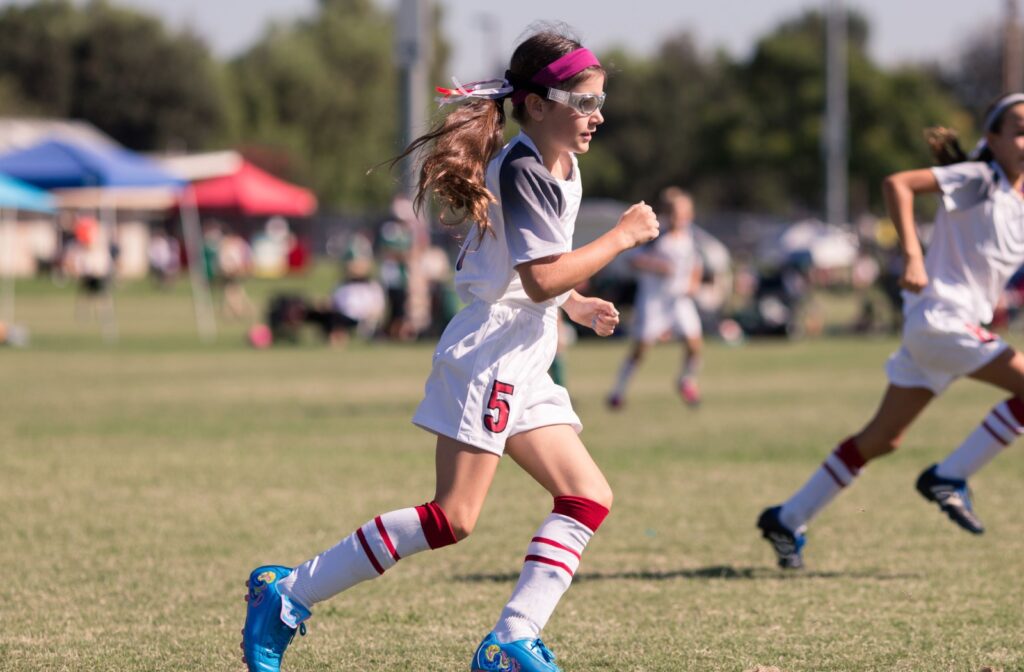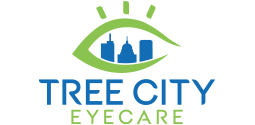If your child is having trouble seeing the board in class or holding their books closer than usual, they may be experiencing myopia, also known as nearsightedness. Myopia is a common condition, especially among children, and it tends to progress over time. Without early management, it can lead to a higher risk of eye conditions later in life. That’s where myopia control lenses can help.
Myopia control lenses are one of several strategies available to slow the progression of nearsightedness in growing eyes, and they can play a crucial role in preserving vision as children develop.
How Myopia Control Lenses Work
Myopia control lenses are designed to address the way light enters the eye. In a typical myopic eye, the eyeball grows too long, causing light to focus in front of the retina rather than directly on it, which results in blurry distance vision.
However, that’s only part of the story. Research shows that when light focuses behind the peripheral retina (a phenomenon known as hyperopic defocus), it can encourage the eye to continue growing, thereby further worsening myopia. Myopia control lenses work by changing how light hits the eye, creating a more favorable optical environment that discourages this elongation.
Options for Myopia Management
There isn’t a one-size-fits-all solution to managing myopia, which is why your eye doctor should take a personalized approach. There are several lens options and complementary treatments that can be tailored to your child’s lifestyle and prescription.
Soft Myopia Control Lenses
Daily disposable lenses, such as MiSight 1-Day and NaturalVue, are soft contact lenses approved for myopia management. These lenses are designed with specific zones that allow for clear vision while helping shift peripheral focus. They’re an excellent fit for active children and teens who want flexibility without compromising on effectiveness.
Orthokeratology (Ortho-K)
Ortho-K lenses gently reshape the cornea while your child sleeps overnight. In the morning, they can enjoy clear vision without the need for corrective lenses, such as glasses or contacts. These lenses also change the peripheral focus of the eye, making them a reliable option for slowing myopia progression. Ortho-K has become increasingly popular among families seeking non-surgical daytime freedom from contact lenses.
Atropine Eye Drops
Low-dose atropine drops are another clinically supported tool in the myopia management toolbox. Used at bedtime, these drops can help reduce eye elongation when used alone or in combination with other methods, such as contact lenses. They’re particularly helpful for younger children or those who may not be ready for contacts.
Specialized Eyeglass Lenses
For children who are more comfortable wearing glasses, spectacle lenses designed for myopia control may be a good option. These lenses look and feel like regular glasses but include optical technology that helps manage peripheral defocus. They’re a noninvasive, easy-to-wear option for kids who prefer not to wear contact lenses.
Why Myopia Control Matters
Beyond clearer vision, the goal of myopia management is to slow the progression of nearsightedness over time. High myopia, often defined as a prescription stronger than -6.00D or an axial length greater than 26mm, can increase the risk of long-term vision complications like retinal detachment, myopic maculopathy, glaucoma, and cataracts.
While glasses or contact lenses can correct blurred vision, they don’t address the underlying progression of the condition. Myopia control lenses are designed to do both, supporting clear vision now and helping protect your child’s vision for the future.
What to Expect with Treatment
Regular follow-ups enable your eye doctor to monitor eye growth and make adjustments as needed. Every child responds differently, and part of their job is to monitor changes closely and adapt the treatment plan as needed.
It’s also important to pair any treatment with healthy habits. Encourage children to spend more time outdoors, take regular breaks from screens, and maintain balanced routines that support visual development. Myopia management is most effective when it’s consistent and everyone is on the same page.
Choosing the Right Option

Each child is unique, and their myopia control plan should be, too. Some children do well with soft contact lenses they wear during the day, while others benefit more from overnight Ortho-K or the simplicity of glasses and atropine drops.
During your visit, discuss your child’s vision needs, lifestyle, and preferences. Let your eye doctor assess factors such as age, activity level, and the rate of myopia progression to help determine the most suitable approach. Your goal is to have options that fit seamlessly into your child’s day-to-day life.
Getting Started with Tree City EyeCare
If you’re concerned about your child’s vision or have noticed signs of nearsightedness, we’re here to help. Early detection and timely treatment can significantly slow the progression of myopia and support long-term eye health.
Tree City EyeCare combines innovative technology with personalized care to deliver thorough and thoughtful myopia management. Our team is dedicated to helping children develop clearer vision and a healthier future. Contact us today to schedule a comprehensive eye exam and explore your child’s options for myopia control. We’ll take the time to answer your questions, explain every option clearly, and recommend a path that works for your family.


